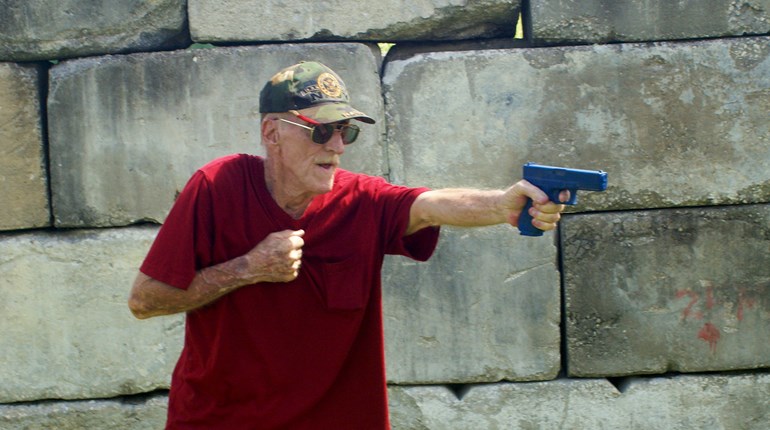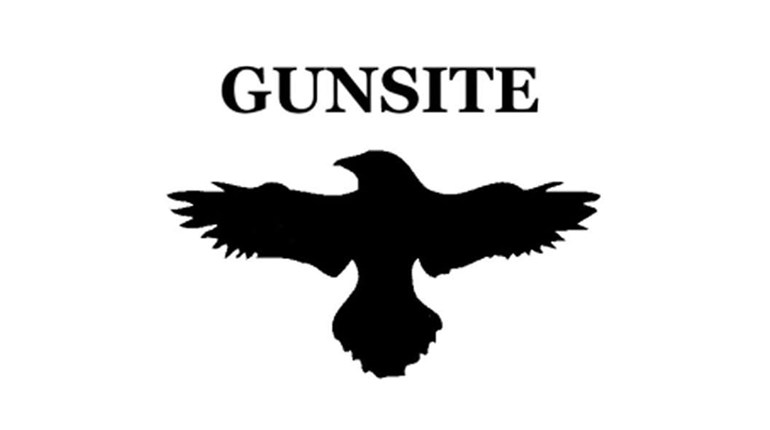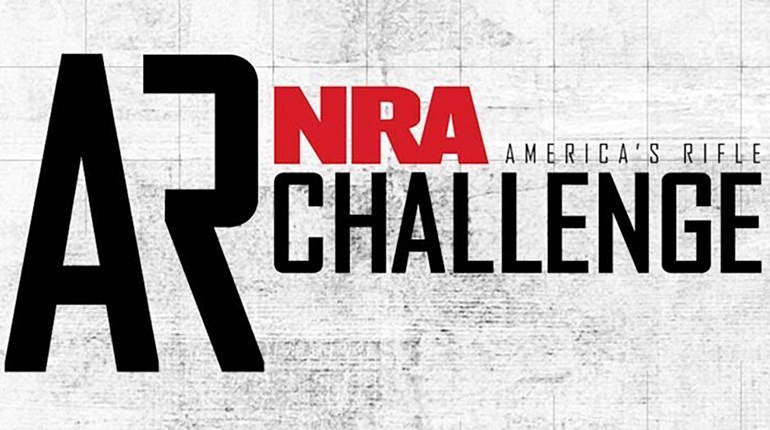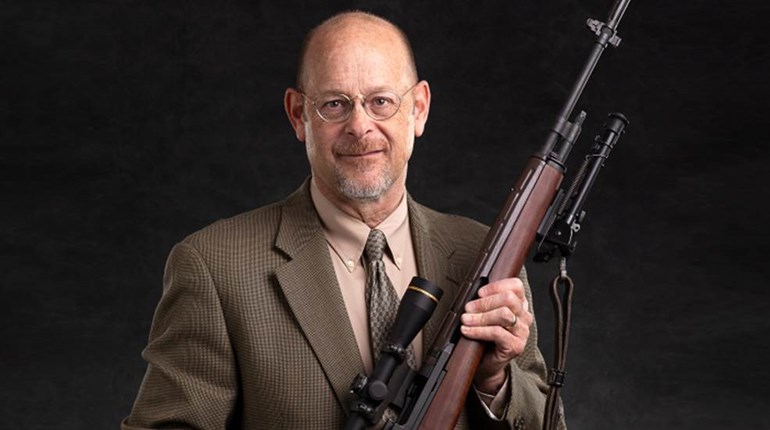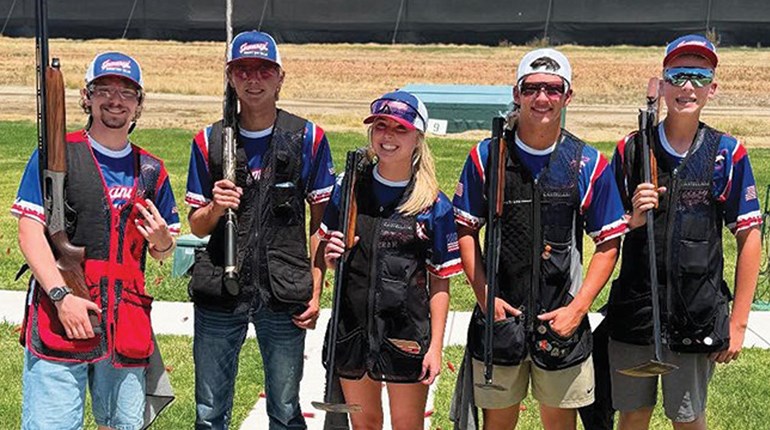
While admittedly not a Scout rifle, the author’s bolt gun features some, but not all, of Jeff Cooper’s criteria.
I got a hearty chuckle out of Jeff Cooper when I told him about my new rifle and what I called it. This happened a year or two before his passing, at a time when he was still receiving visitors. As most shooters are aware, he had a long and productive life, rich with adventure and achievement. A World War II Marine, Cooper fought through a number of the Pacific War battles, eloped with his college sweetheart and came back to academic life in the post-war world. His interest in personal weaponry for sport and defense became an occupation, as he developed a body of pistol-shooting dogma that eventually became known as “the Modern Technique of the Pistol.” First in his native California and eventually at the Arizona school he founded, Cooper taught military, police and civilian personnel how to defend themselves with personal arms. Along the way, he hunted much of the world, wrote many books and hundreds of magazine articles and literally became the guru where personal-defense shooting was concerned. In the latter years of his life, Cooper lived in the Sconce, the unique home he built with his wife, Janelle, on his beloved Gunsite Ranch. It was a full life, wherein he was greatly respected, if not outright revered.
Although he was commonly associated with the Colt M1911 pistol, Jeff Cooper also had interests in other arms. In the early ’80s, he held a couple of conferences at Gunsite Academy. Assembling a group of experienced gunsmiths, hunters, infantry and Spec-Ops types, Cooper set about designing a specialized rifle which he called the “Scout Rifle.” Although such an arm might have a role for peacetime riflemen afoot in unpopulated country, the early intent was to properly equip the military scout. Armies regularly employ such stout fusiliers, who work ahead of and to the flanks of larger units. Their role is to scout—observe the enemy’s activities—and report those observations. Scouts must travel light and heavy conventional infantry rifles are too large and unwieldy for ideal use. Since there is a great potential for a scout having to fight his way out of a jam, he needs a light, fast-handling rifle of adequate power. Cooper and his associates had a lot of fun coming up with a list of specifications. They also produced a rifle style that had civilian-hunter potential. All of this was duly reported in Cooper’s columns along with his articles.
The basic specifications called for a rather short, bolt-action rifle with special features like an integral folding bipod, detachable-box magazine and additional magazine storage in the butt. Cooper also wanted a long-eye-relief scope of low power, mounted well forward of the action—and yes, that does look funny. Above all else, Scouts are light. There was enough special stuff on the stock and sight design that you could not just saw off a Winchester Model 70 and thus produce the gun. A proper Scout rifle was a carefully designed and highly specialized bolt gun that nobody made. Cooper’s interest in a commercial product got the industry going and Scout rifles began to appear in factory cartons. After some false starts, Steyr of Austria made some and the concept became an accepted design. Other makers joined in and most recently, Ruger produced its Gunsite Scout, which sells quite well.
As this happened, Cooper kept up the hype for a rifle that was primarily a military design, but was useful to the sportsman. But problems began to crop up when other alleged authorities began to put their spin on the concept. For a while, Cooper was constantly reminding people their rifle was not a real Scout in the sense that it was missing one or more of the special features that made the gun what it was. After a few years of this, he was getting, shall we say...forceful, in his commentary by folks who could not get it through their skulls that a Scout was something more than a carbine.
When all of this was going on, I was new to the writing business and all wrapped up in the one-handed guns, pistols and revolvers. I had a few rifles and was only an occasional hunter. But when I saw my first true Scout rifle at Gunsite, I just plain fell in love with the thing. This one, built on a Remington Model 700 action, came from the gunsmith at the ranch. It was very light, but the feature that appealed to me most was the forward-mounted scope. It was a Leupold Scout scope set up to be mounted forward of the rifle’s action, a matter that required special lenses. Thus equipped, the little rifle was fast to the shoulder and quick to sight. I had to have one.
I’ll spare you all of skullduggery that went into getting it done, but Ted Yost made the rifle for me. An absolutely masterful gunsmith, Yost used a Model 20 Ultra Light Arms action and a Douglas barrel blank. The Leupold scope is in Talley rings on bases that have been milled integral with the steel of the barrel. Yost even managed a barrel-diameter brake at the muzzle. In a custom fiberglass stock, this slick little .308 Win. shorty weighs just over 5 pounds. It is the lightest, handiest little rifle I have ever seen. Yost is a superb craftsman that I recommend to anyone.
The rifle lacks many features of a true Cooper Scout Rifle—bipod, detachable-box magazine, backup iron sights, magazine storage, etc. Those features were deemed necessary on a military rifle, but since I doubt Mad Dog Mattis is going to put me to work next week on the flanks of the 1st Marine Division, I don’t need them. As a matter of fact, my slick little sporter is enough gun for any “woods walking” I might do. At my age and stage, there’s not a lot of cross country wilderness left in me and I pretty much stick to trails.
So that’s what I told Col. Cooper when I described my new longarm. It is a Trail rifle because it damned sure isn’t a Scout rifle and because I didn’t want to get hit by a thunderbolt hurled from the Sconce for calling it one. The Gunsite guru chuckled heartily at that one. I respect the memory of a long-ago moment with the guy who literally developed the concept of serious fightin’ iron.












